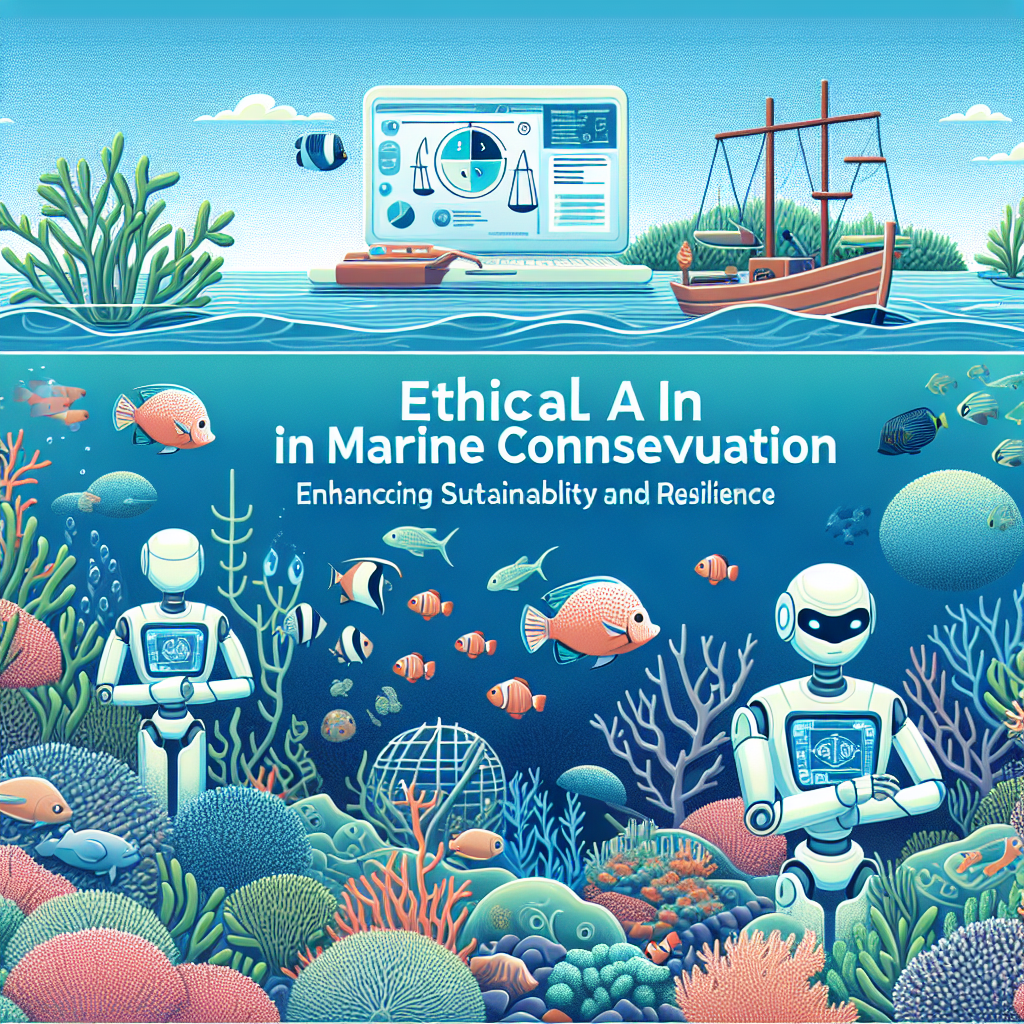Ethical AI in Marine Conservation: Enhancing Sustainability and Resilience
Introduction
The oceans cover more than 70% of the Earth’s surface and play a crucial role in regulating the climate, providing food and livelihoods for millions of people, and supporting a rich diversity of marine life. However, human activities such as overfishing, pollution, and climate change are threatening the health of marine ecosystems and the services they provide. In this context, the use of Artificial Intelligence (AI) in marine conservation has the potential to enhance sustainability and resilience by improving our understanding of marine ecosystems, guiding conservation efforts, and monitoring and enforcing regulations.
Ethical AI refers to the responsible and transparent development and deployment of AI technologies, taking into account the potential social, ethical, and environmental impacts. In the context of marine conservation, ethical AI can help ensure that conservation efforts are effective, inclusive, and respectful of the rights and needs of local communities and indigenous peoples.
Enhancing Sustainability
AI technologies have the potential to revolutionize marine conservation by providing new tools and methods for monitoring and managing marine ecosystems. For example, AI can analyze large volumes of data from satellites, drones, and underwater sensors to track changes in marine habitats, identify threats to marine species, and predict the impact of climate change on marine ecosystems.
AI can also help optimize conservation interventions by identifying priority areas for protection, guiding the design of marine protected areas, and monitoring the effectiveness of conservation actions. By integrating AI technologies into conservation planning and management, conservation practitioners can make more informed decisions and allocate resources more efficiently, leading to better outcomes for marine biodiversity and ecosystem health.
Resilience
In addition to enhancing sustainability, AI can also help build resilience in marine ecosystems by enabling adaptive management approaches that respond to changing environmental conditions and emerging threats. For example, AI can be used to develop early warning systems for marine disasters such as oil spills, harmful algal blooms, and coral bleaching events, allowing for timely and effective responses to mitigate their impact.
AI can also support the restoration and rehabilitation of degraded marine habitats by identifying suitable sites for restoration, optimizing the design of restoration projects, and monitoring the progress of restoration efforts. By using AI to guide conservation and restoration activities, practitioners can increase the likelihood of success and help marine ecosystems recover from past damage.
FAQs
Q: How can AI help address overfishing in marine ecosystems?
A: AI can analyze data on fish populations, fishing activities, and marine habitats to identify overfished species and areas, predict the impact of fishing on marine ecosystems, and recommend sustainable fishing practices.
Q: How can AI support the monitoring and enforcement of marine conservation regulations?
A: AI can analyze satellite imagery, underwater acoustic data, and vessel tracking information to detect illegal fishing activities, monitor compliance with marine protected area regulations, and identify hotspots of illegal fishing activity.
Q: What are the ethical considerations when using AI in marine conservation?
A: Ethical considerations include ensuring that AI technologies are developed and deployed in a transparent and accountable manner, respecting the rights and needs of local communities and indigenous peoples, and minimizing the risks of unintended consequences such as bias, discrimination, and loss of privacy.
Q: How can stakeholders collaborate to promote the ethical use of AI in marine conservation?
A: Stakeholders can collaborate by sharing data and expertise, developing best practices and guidelines for the ethical use of AI in marine conservation, and engaging with local communities and indigenous peoples to ensure that AI technologies benefit all stakeholders and promote social and environmental justice.
Conclusion
Ethical AI has the potential to enhance sustainability and resilience in marine conservation by providing new tools and methods for monitoring and managing marine ecosystems, guiding conservation efforts, and supporting the restoration and rehabilitation of degraded marine habitats. By incorporating ethical considerations into the development and deployment of AI technologies, we can ensure that conservation efforts are effective, inclusive, and respectful of the rights and needs of local communities and indigenous peoples. By harnessing the power of AI for marine conservation, we can work towards a more sustainable and resilient future for our oceans and the communities that depend on them.

